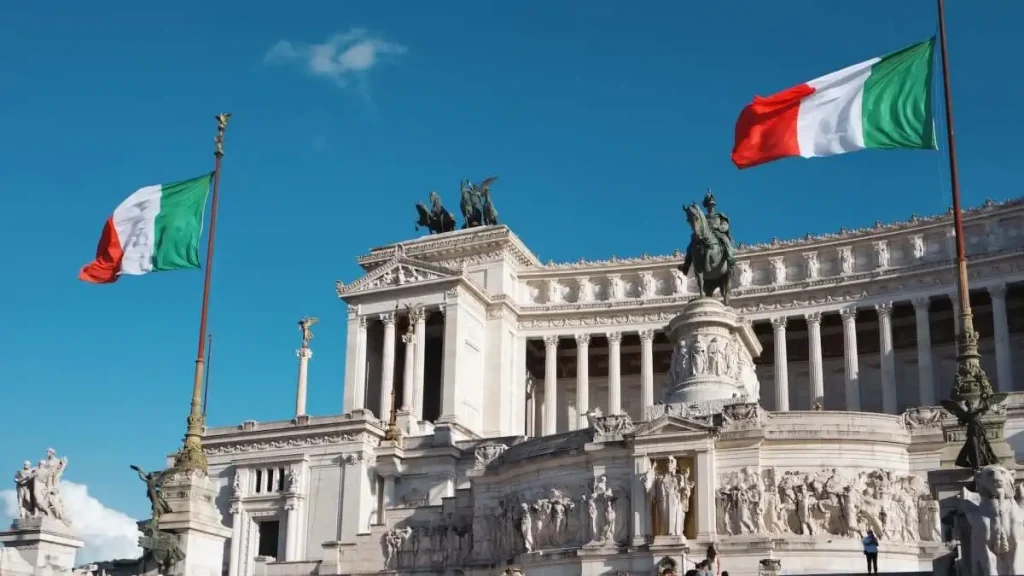The Italian government has unveiled a comprehensive new visa quota plan that will provide nearly half a million work permits to non-European Union (non-EU) nationals between 2026 and 2028. This major policy shift is part of Italy’s broader strategy to tackle persistent labour shortages and a deepening demographic crisis that threatens the country’s long-term economic stability.
The plan, approved by Prime Minister Giorgia Meloni’s cabinet, will see a total of 497,550 new work permits distributed over three years. Of this figure, 164,850 permits are scheduled for issuance in 2026, while the remaining permits will be allocated progressively through 2027 and 2028.
This new initiative builds on the previous visa quota policy implemented between 2023 and 2025, during which over 450,000 foreign workers were granted permits to help alleviate worker shortages in essential sectors.
Demographic and Workforce Pressures Drive the Policy Shift
Italy’s decision to expand its work visa quotas is rooted in growing concerns about the country’s ageing population and declining birth rates. In 2024 alone, the number of deaths surpassed births by 281,000, a stark reminder of the demographic imbalance that has plagued the nation for over a decade.
Official data shows that Italy’s total population fell by 37,000 during 2024, further highlighting the shrinking working-age demographic. This trend has significantly strained key sectors of the economy, with businesses increasingly unable to meet labour demands.
Experts from national demographic institutes and economic think tanks project that Italy will need to import at least 10 million foreign workers by 2050 to maintain current productivity levels and keep its economy afloat.
Quotas Based on Real Market Demand
The Italian government emphasized that the new work visa allocations were developed after close consultation with industry leaders and employers. The quotas are tailored to meet the specific needs of sectors where workforce shortages are most critical.
The approved work permits will primarily benefit the following industries:
Agriculture
Italy’s farming industry has long depended on migrant labour to harvest crops and maintain food production. The nation’s leading farmers’ association, Coldiretti, welcomed the new quotas, calling them essential to safeguarding food security and the viability of rural communities.
Construction
Major infrastructure and housing projects across the country have stalled due to a lack of skilled and unskilled labour. The new policy aims to bring in the necessary workforce to fill these roles and keep projects on track.
Healthcare
With Italy’s ageing population putting pressure on medical facilities, the country faces an acute shortage of nurses, caregivers, and medical support staff. The expanded visa programme is expected to help address these gaps, especially in elderly care services.
Tourism and Hospitality
As one of the world’s most visited countries, Italy’s tourism and hospitality industries are vital to its economy. However, restaurants, hotels, and travel companies have struggled to hire enough staff during peak seasons. The new work permits will allow them to bring in temporary and permanent workers more easily.
Manufacturing
Industrial regions, particularly in northern Italy, have reported a growing demand for machinists, mechanics, and technical operators. The manufacturing sector will benefit from targeted recruitment under the new visa allocations.
Easier Access for Non-EU Job Seekers
The expanded visa quota comes with a series of administrative reforms aimed at streamlining the application process for non-EU workers. Key changes include:
-
Digitization of documents, allowing applicants to submit forms and supporting evidence online.
-
Shorter processing times, improving the speed at which work visas are reviewed and approved.
-
Simplified requirements, reducing bureaucratic hurdles for both applicants and employers.
Additionally, the government has lifted restrictions on converting seasonal or long-stay work permits into more permanent residency statuses. This change provides a clearer pathway to long-term settlement for foreign workers who wish to build a future in Italy.
The reforms also guarantee legal protections for all incoming workers. This includes full access to public healthcare, social security, and worker rights—ensuring that foreign labourers are treated on par with their Italian counterparts.
Policy With Broader Economic and Social Goals
While the immediate goal of the plan is to alleviate workforce shortages, Italy’s broader intention is to restructure its immigration model in a way that aligns with economic goals, national security, and social stability.
In her cabinet’s official statement, Prime Minister Meloni emphasized that the new approach balances the need for labour market support with structured and legal migration routes, steering away from irregular migration patterns that have long plagued southern Europe.
The initiative also reflects rising competition among Western nations for migrant labour. Countries like Germany, Canada, and Spain have similarly adjusted their immigration policies in recent years to attract foreign workers as their own populations age.
What This Means for the Future
The new visa plan represents a significant opening for non-EU citizens looking to work and settle in Italy. With the promise of legal entry, employment opportunities, and social protections, Italy is positioning itself as a viable destination for global talent—particularly for workers from Africa, Asia, and Latin America.
If implemented effectively, the policy could reverse years of economic slowdown caused by population shrinkage and labour shortages. It also has the potential to reshape Italy’s migration narrative, moving away from crisis management toward long-term planning based on inclusion and economic sustainability.
As the first batch of permits begins distribution in 2026, prospective migrants are encouraged to monitor announcements from Italian embassies and consular offices for application timelines, sector-specific quotas, and required documentation.
For Italy, this is more than just a work visa programme—it is a strategic investment in the country’s future.













